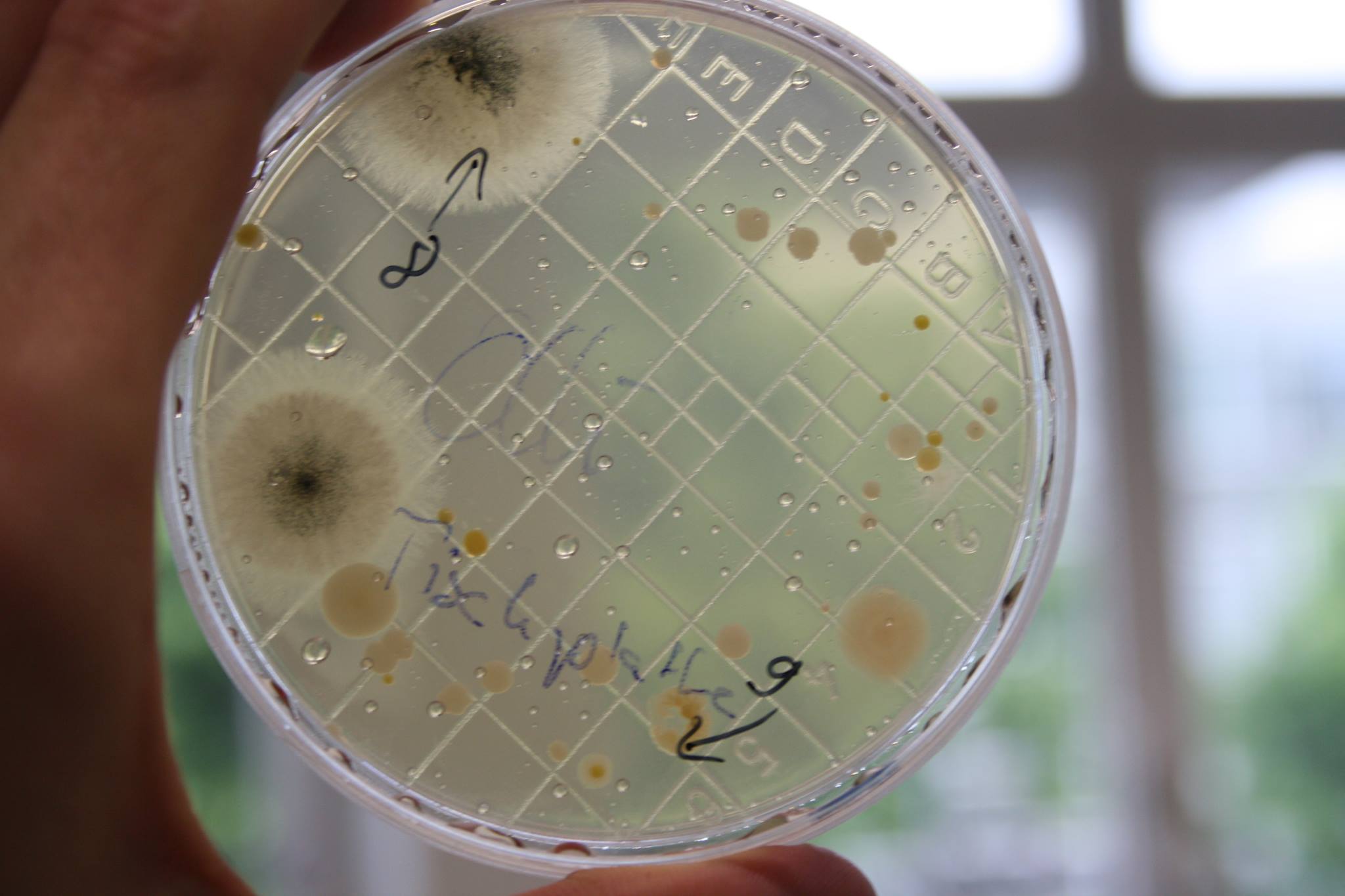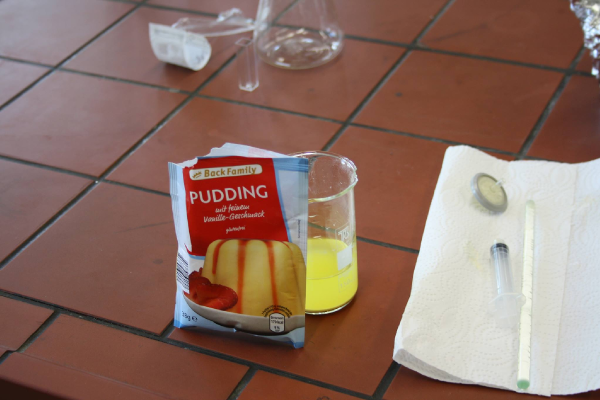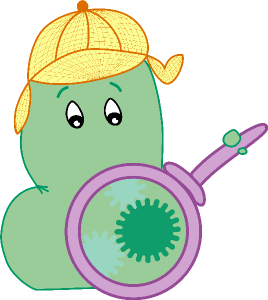Team:Aachen/Collaborations/Kaiser-Karls-Gymnasium
From 2014.igem.org
(→Lessons 5 & 6 - Glowing Vanilla Pudding) |
|||
| Line 103: | Line 103: | ||
For each of the lessons we also recorded our experience. Read about the outcome of our work below. | For each of the lessons we also recorded our experience. Read about the outcome of our work below. | ||
| + | |||
{{Team:Aachen/BlockSeparator}} | {{Team:Aachen/BlockSeparator}} | ||
| Line 113: | Line 114: | ||
In today's lesson, our members Nina and René offered the students a short impression of what to expect in the course of this teaching module. We also explained synthetic biology and the goal of our project. | In today's lesson, our members Nina and René offered the students a short impression of what to expect in the course of this teaching module. We also explained synthetic biology and the goal of our project. | ||
| + | |||
{{Team:Aachen/BlockSeparator}} | {{Team:Aachen/BlockSeparator}} | ||
| Line 129: | Line 131: | ||
In order to demonstrate how many and which microorganisms are our steady companions, we conduct an experiment with the students. A pair of students received 3 agar plates: one with regular LB agar, one plate with agar supplemented by an antibiotic, and one selective agar plate for yeasts and fungi. Equipped with the plates, the students wander through their school and take contact samples from places they think many microorganisms grow there. We will incubate the plates over the weekend so that we can show the students in the next lesson what has grown on their samples. | In order to demonstrate how many and which microorganisms are our steady companions, we conduct an experiment with the students. A pair of students received 3 agar plates: one with regular LB agar, one plate with agar supplemented by an antibiotic, and one selective agar plate for yeasts and fungi. Equipped with the plates, the students wander through their school and take contact samples from places they think many microorganisms grow there. We will incubate the plates over the weekend so that we can show the students in the next lesson what has grown on their samples. | ||
| + | |||
{{Team:Aachen/BlockSeparator}} | {{Team:Aachen/BlockSeparator}} | ||
| Line 146: | Line 149: | ||
As a starter for our next topic that is relevant to our project, we distribute a worksheet about quorum sensing among the students. For the remainder of the lesson, the students read the text and begin to answer the attached questions. | As a starter for our next topic that is relevant to our project, we distribute a worksheet about quorum sensing among the students. For the remainder of the lesson, the students read the text and begin to answer the attached questions. | ||
| + | |||
{{Team:Aachen/BlockSeparator}} | {{Team:Aachen/BlockSeparator}} | ||
| Line 168: | Line 172: | ||
While the other groups wait for their turn, their supervisors explain the background of this experiment: The electrons in some molecules change into energy states when irradiated with electromagnetic waves. When returning to the normal state, the electrons dissipate excess energy, also in the form of electromagnetic radiation. This process is called fluorescence. Vanilla pudding contains the molecule riboflavin (vitamin B2). When riboflavin is irradiated with blue light, the molecule fluoresces green. The intensity of the green light is visually recorded by our device. Special software processes the data and the measured value is displayed on the cellphone connected to the device via Bluetooth. We will discuss the results of the experiment next class. | While the other groups wait for their turn, their supervisors explain the background of this experiment: The electrons in some molecules change into energy states when irradiated with electromagnetic waves. When returning to the normal state, the electrons dissipate excess energy, also in the form of electromagnetic radiation. This process is called fluorescence. Vanilla pudding contains the molecule riboflavin (vitamin B2). When riboflavin is irradiated with blue light, the molecule fluoresces green. The intensity of the green light is visually recorded by our device. Special software processes the data and the measured value is displayed on the cellphone connected to the device via Bluetooth. We will discuss the results of the experiment next class. | ||
| + | |||
{{Team:Aachen/BlockSeparator}} | {{Team:Aachen/BlockSeparator}} | ||
| Line 182: | Line 187: | ||
Now we have individually discussed all aspects of our project. Therefore, Nina summarized all the topic together with the students, and outlined the link between all these different topics and our iGEM project idea. In doing so, we almost arrived at the end of our teaching module "Synthetic Biology". Next class, we will visit the biology-chemistry course of Kaiser-Karl-Gymnasium for the last time, and do some career-exploration in synthetic biology and related fields. | Now we have individually discussed all aspects of our project. Therefore, Nina summarized all the topic together with the students, and outlined the link between all these different topics and our iGEM project idea. In doing so, we almost arrived at the end of our teaching module "Synthetic Biology". Next class, we will visit the biology-chemistry course of Kaiser-Karl-Gymnasium for the last time, and do some career-exploration in synthetic biology and related fields. | ||
| + | |||
{{Team:Aachen/BlockSeparator}} | {{Team:Aachen/BlockSeparator}} | ||
Latest revision as of 03:34, 18 October 2014
|
|
|
|
|
|
|
 "
"























